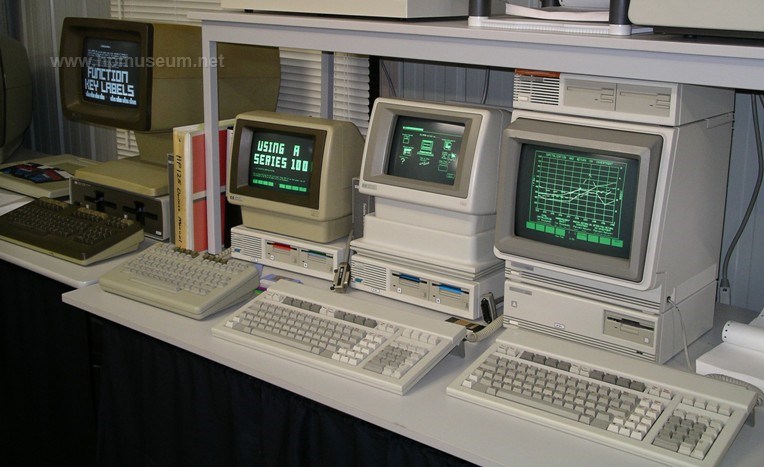Business Desktops/Calcs
 | 100 Series Selection: |
| 1) 125 (1981) | |
| 2) 120 (1982) | |
| 3) 150 Touchscreen (1983) | |
| 4) Portable 110 (1984) | |
| 5) 150 Touchscreen II (1985) | |
| 6) Portable Plus (1985) | |
HP introduced the 100 Series in 1981, beginning with the 125 . The 100 Series machines were unique in a number of ways. These computers were the first from HP to be primarily designed for business professionals, rather than engineers or scientists. Unlike previous computers from HP, most of the software that ran on the 100 Series machines was not written by the user or by HP. The 125 was followed by the 120. Both of these machines had Z80 processors and ran Digital Research's CP/M operating system. These computers were able to run a wide variety of software , most of which was not written specifically for an HP computer. | |
| Back | Product Documentation | Category Accessories |
^ TOP©2004 - 2024 BGImages Australia - All Rights Reserved.
The HP Computer Museum and BGImages Australia are not affiliated with HP Inc. or with Hewlett Packard Enterprise. Hewlett Packard and the HP logo are trademarks of HP Inc and Hewlett Packard Enterprise. This website is intended solely for research and education purposes.
